


The Most Exciting Two Minutes in InfographicsA Visual Guide to the Kentucky Derby
Headquartered in the city that calls itself home to the “Run for the Roses”, and sharing a similar name, we at Derby Supply Chain Solutions naturally have a certain affinity for the Kentucky Derby. In honor of the 143rd Kentucky Derby this year, we wanted to do something special to showcase the history and tradition of our beloved city’s biggest event.

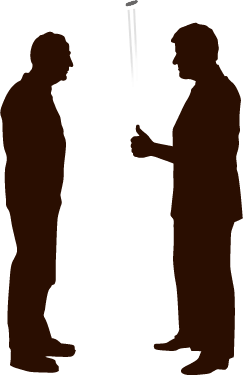
If not for the fortuitous flip of a coin, the Kentucky Derby may have been named “The Kentucky Bunbury.”
In 1779, Edward Smith-Stanley, the 12th Earl of Derby, and Sir Charles Bunbury attended the Epsom Oaks in England. After seeing how successful the race was, they decided to start a horse race of their own. After disputing for sometime what to name the race, they chose to settle the dispute by flipping a coin. Thankfully (for us all), Sir Charles Bunbury lost.
The Most Exciting Two Minutes in Sports
Horses in the Kentucky Derby run the length of the 1.25 mile-long race track at speeds exceeding 35 mph. How does that compare against the rest of the animal kingdom?
Marathon Runner
6:15:00Hypothetical Time
12 MPHAVG. Speed
Slowest Time Ever
2:15:20
33.3 MPHAVG. Speed
Fastest Time Ever
1:59:40
37.8 MPHAVG. Speed
Greyhound
1:40:00Hypothetical Time
45 MPHAVG. Speed
Cheetah
1:04:00Hypothetical Time
70 MPHAVG. Speed
Bluegrass Dominance
76% of Kentucky Derby winners were bred in Kentucky.
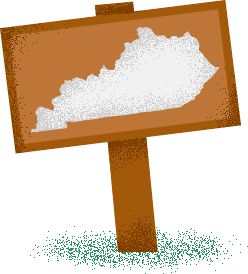
Try this on for Size
Weight restrictions on the day of the race state that colts and geldings can’t carry more than 126 pounds, and fillies can’t carry more than 121 pounds on their back…and that’s including equipment. It’s no wonder why jockeys are so small!
Thoroughbred
Height: 16 Hands
Weight: 1,000 pounds
Jockey
Height: 5'4"
Weight: 112 pounds
The Legend of Pegasus
Fusaichi Pegasus, who was purchased for $4 million by Fusao Sekiguchi at the Keeneland Yearling Sale, was the most expensive horse to win the Kentucky Derby.
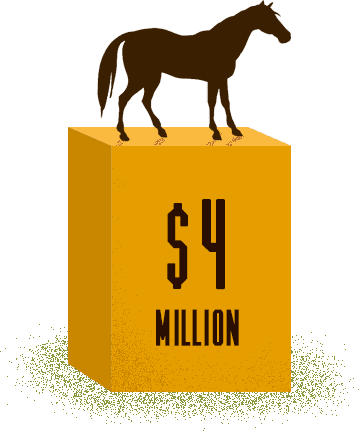
Know Your Derby Lingo
- Furlong - An eighth of a mile. The Kentucky Derby is approximately 10 furlongs.
- Hand - A measurement equaling 4 inches used to measure the height of a thoroughbred.
- Win Bet - A wager on a horse to finish first.
- Place Bet - Wager on a horse to finish first or second.
- Show Bet - Wager on a horse to finish third or better.
- Exacta (or Perfecta) - A wager on two specific horses to cross the finish line in first and second place in exact order.
- Trifecta - A wager picking the first three finishes in exact order.
- Superfecta - A wager where you have to pick the first four finishers in exact order.
- Bridge Jumper - A person who bets an unusually large sum on a single horse. Refers to the fact that if they lose they may be jumping off the nearest bridge.
Old Faithful
The Kentucky Derby is the only one of the Triple Crown races to have been run every year since it began in 1875.
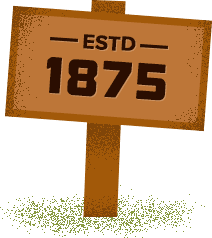
Derby Crowd: By the Numbers
The number of spectators that attend the Derby has grown consistently throughout the years. 2015 marked the largest crowd in the Derby’s 140 year history, surpassing the previous record of 165.307 in 2012, with 170,513 in attendance. With such a large crowd, it takes an entire army to feed their appetite.
- 120,000Mint Juleps
- 800 lbs. of Bourbon Balls
- 1,892Sheets of Derby Pie
- 7,800Liters of Bourbon
- 425,000Cans of Beer
- 142,000Hot Dogs
- 13,800lbs. of Beef
USA, USA!
Only 6 Derby winners were bred outside the U.S. Canada has three, the UK has 2 and Venezuela has 1.
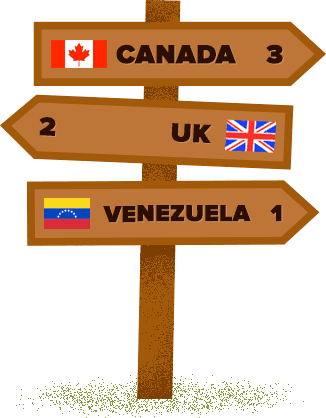
Angels in the Infield
Those who have never attended Derby are often surprised by the things they see walking the infield. Part Mardi Gras and part high society – the crowd is a perfect mixture of class and chaos.
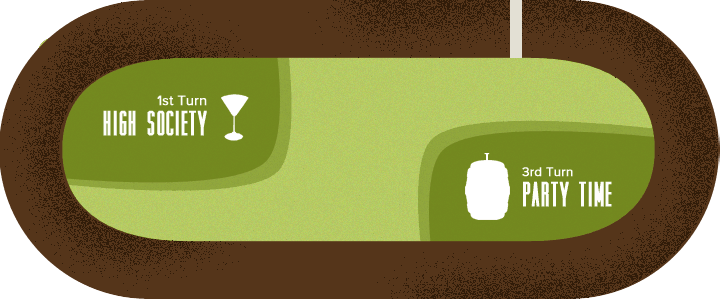
Standing out From the Crowd
Fashion at the Kentucky Derby has undergone its fair share of change. The typical attire we have grown accustomed to today at the Kentucky Derby bears little resemblance to your average spectator’s dress in the early 1900’s. In fact, there have been many points throughout the ages where Derby attire has evolved, but the motivation of standing out from the crowd is still the same.
- 1900's
- 1920's
- 1960's
- Present
What are the Odds?
Any experienced gambler knows odds are everything when it comes to betting. The less likely something is, the greater the risk and the larger the payout. This year, when you’re deciding which horse to place your money on, consider these odds:
Odds winner will be a filly 46-1 Odds black horse will win 35-1 Odds derby winner will go on to win triple crown 9-1 Odds winner will go wire-to-wire 6-1 Odds horse will run dead last from wire-to-wire 146-1 Odds the winning margin will be a nose 17-1
Against the Odds
Despite the excitement over Mine That Bird's amazing 50-to-1 win in 2009, the biggest long-shot victory in the history of the Kentucky Derby came in 1913 when Donerail went off at odds of 91-1 and set a new track record of 2:04 4/5. Donerail not only set a new record, but paid a whopping $184.90 on a $2 wager.
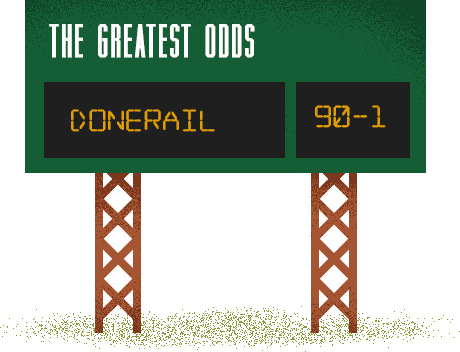

Run for the Roses
Every Derby winner wears the Garland of Roses in the Winner’s Circle and qualifies to compete for the Triple Crown by winning the Belmont and Preakness Stakes races. The Kroger Co. is the official florist of The Derby and since 1987 fans can visit local Kroger stores to watch the Garland being made. The rose tradition dates back to the late 1800s.
3 is the magic number
In the entire history of the Kentucky Derby only three fillies have ever worn the Garland of Roses. The first filly to ever win a Derby was Regret in 1915, followed by Genuine Risk in 1980 and lastly, Winning Colors in 1988.
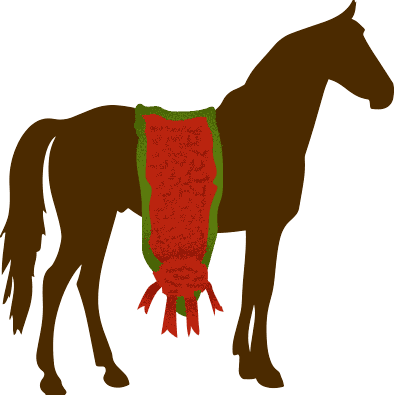
Color of All Derby Winners
Always bet on bay. Well, not always, but statistically speaking they have the best odds of winning. Throughout the Derby’s history, bay colored horses have always held the reins, followed by chestnut and brown. Albeit, with a large gap between 2nd and 3rd place.
Bay
62Winners
Chestnut
45Winners
Brown
13Winners
Gray
7Winners
Black
6Winners
Dark Bay
6Winners
Dark Brown
2Winners
Roan
1Winner


Gold Rush
The owner of the winning horse receives a 2 foot tall Gold trophy embellished with an 18-karat gold horse and decorative horseshoe.
The Kentucky Derby Trophy is made of 56 ounces of 14 and 18 karat gold. If you were to melt it down its raw material value would be worth $90,000 in scrap gold. Amazingly, that’s chump change when compared to the overall purse for winning. Since 2005, Churchill Downs has guaranteed a purse of at least $2 million to the owner whose horse first crosses the line.

Show Me the Money
There are currently 43 Derby Winners on Millionaire's Row! Here are the top 5.
-
California Chrome (2014) $14,752,650
-
American Pharoah (2015) $8,650,300
-
Animal Kingdom (2011) $8,387,500
-
Smarty Jones (2004) $7,613,155
-
Alysheba (1987) $6,679,242

All in the Family
Did you know that there are 12 Kentucky Derby winners who have sired Kentucky Derby winners? The last time was when Grindstone won in 1996. His sire was the 1990 winner, Unbridled.
Like father, like son, like grandson... two Derby winners not only fathered Derby winners, but were also grandfathers of Derby champions.
Bold Venture (1936) is the only Derby Champion to sire two winners: Assault (1946) and Middleground (1950).

